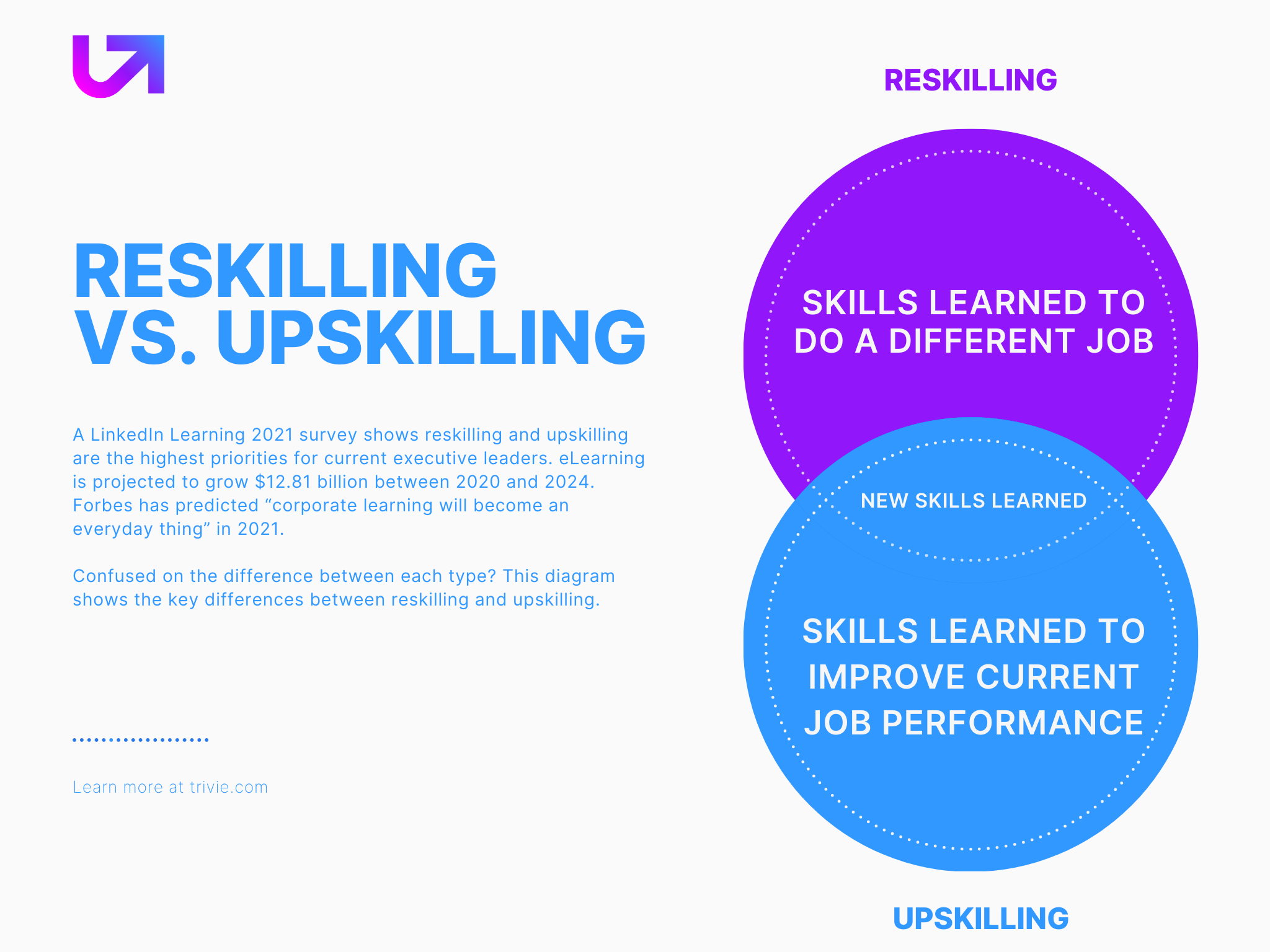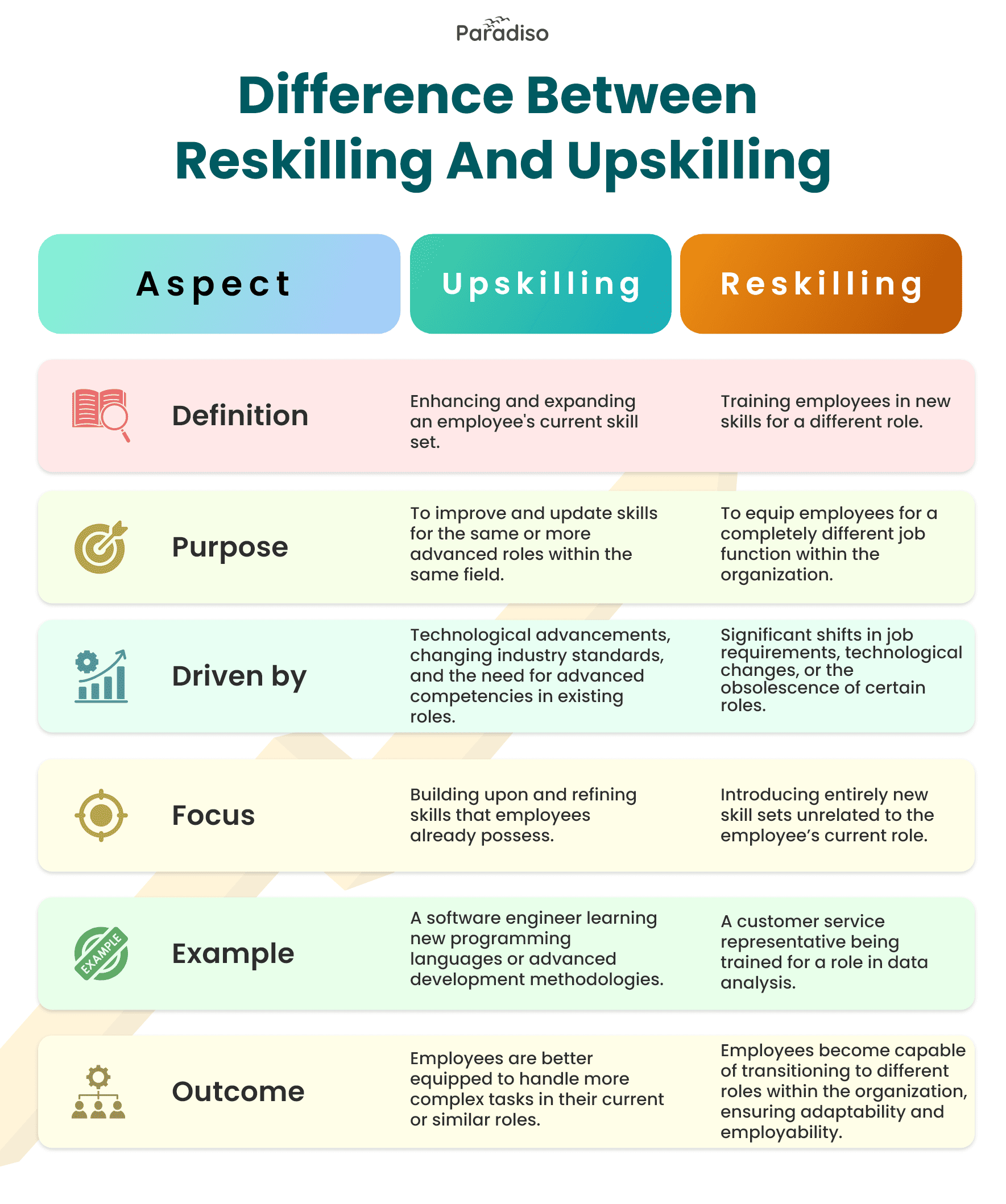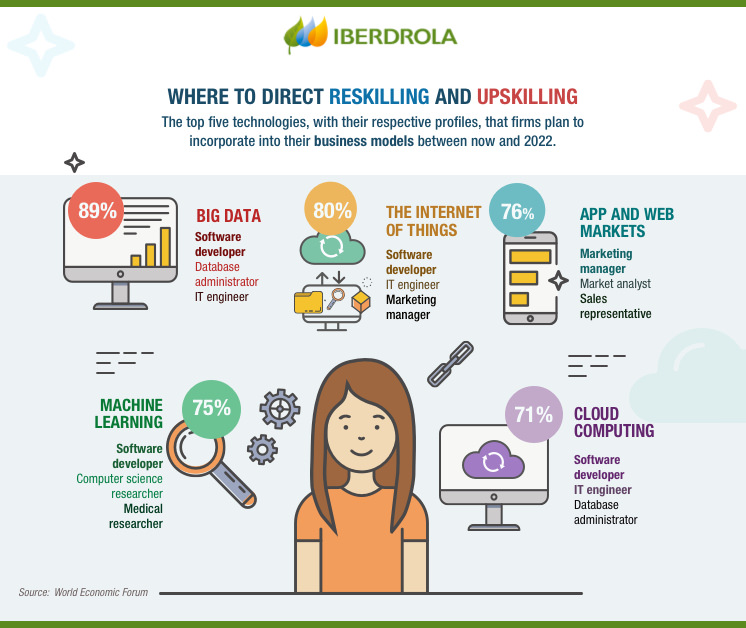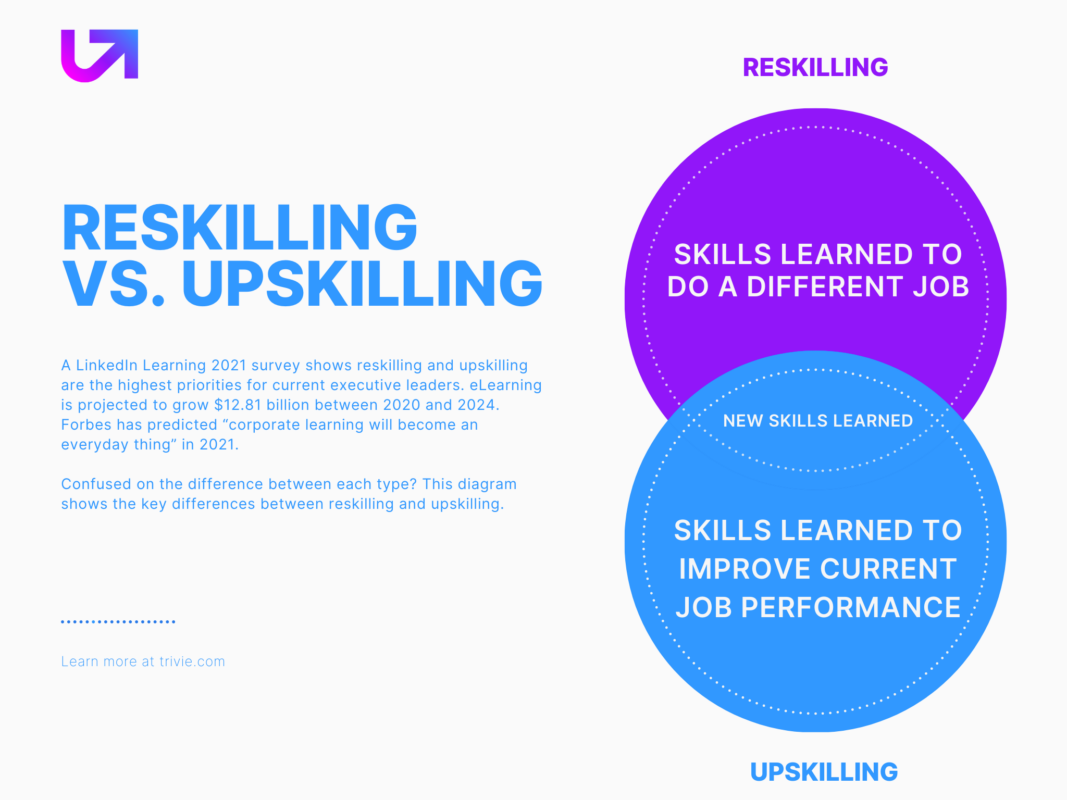Upskilling and Reskilling: The Key to Navigating the Future Workforce
As technology evolves at an unprecedented pace, the skills that were once critical to success in the workplace are rapidly becoming outdated. The future of work demands a more agile and adaptable workforce—one that is equipped with the right skills to meet new challenges. Upskilling and reskilling are two vital strategies that organizations and individuals must adopt to stay competitive in this dynamic environment. These processes are crucial not just for personal career growth but also for ensuring that companies thrive in the face of constant change.
In this article, we’ll explore the concepts of upskilling and reskilling, why they’re essential, and how organizations can successfully implement these strategies to stay ahead of the curve. Let’s dive into how upskilling and reskilling can help unlock potential and drive success.

Upskilling and reskilling are crucial strategies for adapting to an ever-evolving job market.
What is Upskilling?
Upskilling refers to the process of improving or enhancing an employee’s current skill set to match evolving job requirements. It involves providing training to employees to help them develop new skills or gain more advanced knowledge in their existing areas of expertise. The goal is to enable employees to perform their current jobs more effectively, or to take on higher-level roles within the organization.
Why Upskilling is Important
- Increased Employee Engagement: When employees feel their skills are being developed, they are more likely to be engaged and motivated in their work.
- Improved Productivity: Upskilled employees can perform tasks more efficiently, reducing the time and effort required to complete work, which directly benefits the company’s bottom line.
- Better Career Growth: Upskilling allows employees to take on more responsibility, increase their value within the company, and set themselves up for career advancement.
For example, an employee working in marketing might be trained in digital marketing tools such as SEO, SEM, and data analytics, thus gaining a deeper understanding of the evolving digital landscape. This training enables them to contribute more strategically to the company’s goals.
What is Reskilling?
Reskilling, on the other hand, involves learning new skills to transition into a different job role or industry. It’s about equipping employees with entirely new competencies that allow them to switch career paths within the organization or even pursue a new profession. Unlike upskilling, which builds on existing expertise, reskilling prepares employees for a job change.
Why Reskilling Matters
- Adapting to Automation: As industries embrace automation and artificial intelligence (AI), many roles are disappearing. Reskilling ensures that employees can transition into new roles that are less likely to be automated.
- Future-Proofing Employees: With reskilling, employees are prepared to take on jobs that require completely different skill sets, ensuring they remain employable even as job markets evolve.
- Employee Retention: Offering reskilling opportunities helps retain top talent. Employees are more likely to stay with a company that invests in their future and provides pathways for growth, even if their current job role becomes obsolete.
For example, a production worker in a manufacturing plant may be reskilled to become a data analyst, equipping them with the skills to analyze manufacturing data and optimize processes.
The Difference Between Upskilling and Reskilling
While upskilling and reskilling are often used interchangeably, they serve different purposes in workforce development.
- Upskilling focuses on enhancing existing skills to help employees perform their current roles more effectively or advance to a higher position within the same field.
- Reskilling involves learning entirely new skills to shift to a different role, often in a different industry or career path.
Visual Representation of Upskilling vs Reskilling

Upskilling enhances existing skills, while reskilling prepares employees for new roles.
Why Are Upskilling and Reskilling So Important in the Modern Workforce?
1. Rapid Technological Change
As technology advances, job roles are becoming more specialized, and new tools and platforms are being introduced across every industry. Employees need continuous training to stay up-to-date with the latest trends and tools. For example, in industries such as healthcare, information technology, and finance, keeping up with advancements in AI, automation, and big data analytics is critical to staying competitive.
2. Job Market Transformation
The workforce is undergoing a transformation, with many traditional roles disappearing and new roles emerging. According to a report by Iberdrola, many employees are required to develop skills in emerging fields such as AI, blockchain, and cybersecurity. Upskilling and reskilling allow companies to build a workforce that is flexible and prepared for the future.
3. Employee Retention and Loyalty
Providing opportunities for growth and skill development enhances employee satisfaction and loyalty. Employees are more likely to stay with a company that offers training and career development programs, rather than moving to competitors for better opportunities. In fact, organizations with strong learning and development programs experience lower turnover rates and higher employee satisfaction.
4. Business Growth and Innovation
An upskilled and reskilled workforce can contribute fresh ideas and innovative solutions. For companies aiming for sustainable growth, fostering a culture of continuous learning is essential. Employees who are equipped with the latest knowledge and skills are better prepared to tackle business challenges and drive innovation.
How to Implement an Effective Upskilling and Reskilling Program
1. Assess Organizational Needs
Before implementing any upskilling or reskilling program, assess your company’s current and future needs. Determine which skills are in demand and which job roles will require further development. This will help you identify key areas where training should be focused.
2. Offer Personalized Learning Paths
Different employees have different skill sets and career goals. Provide personalized learning paths to help employees choose the right courses, workshops, or mentorship opportunities that align with their career aspirations. Platforms like LinkedIn Learning, Coursera, and Udemy offer a variety of courses that can be tailored to employees’ needs.
3. Provide Ongoing Support
Upskilling and reskilling require continuous support. Implement mentorship programs, coaching, or peer learning groups to ensure that employees can apply their new skills effectively. Additionally, provide regular feedback and check-ins to ensure that employees are progressing.
4. Foster a Culture of Continuous Learning
Create a culture where learning is encouraged and rewarded. Offer incentives for completing training programs, and celebrate employee achievements in skill development. Promote knowledge sharing and collaboration, where employees can learn from one another.
Real-World Examples of Upskilling and Reskilling
Several organizations have successfully implemented upskilling and reskilling programs, resulting in improved employee satisfaction and business performance. Here are a few notable examples:
- AT&T: The company’s “Future Ready” program focuses on reskilling its employees to keep pace with technological advancements. AT&T has invested millions of dollars into training employees in skills such as cloud computing, data analytics, and AI.
- Amazon: Amazon’s Upskilling Programs provide opportunities for employees to advance in their careers, with training in areas such as cloud computing, machine learning, and warehouse management.
- Iberdrola: Iberdrola, a global energy company, offers comprehensive reskilling programs to help employees transition into new roles within the renewable energy sector. Their focus on developing green energy skills helps employees stay relevant as the industry transforms.
FAQs about Upskilling and Reskilling
Q1: What is the difference between upskilling and reskilling?
Upskilling involves enhancing an employee’s existing skills, while reskilling focuses on teaching new skills for a different role or industry.
Q2: Why is upskilling important for businesses?
Upskilling improves employee performance, increases job satisfaction, and ensures that employees remain competitive in the ever-changing job market.
Q3: How can companies implement reskilling programs effectively?
Companies should assess the skills required in the future workforce, provide tailored training opportunities, and offer ongoing support to ensure the successful transition of employees into new roles.
Q4: Can reskilling programs help employees stay competitive in a tech-driven world?
Yes, reskilling programs provide employees with the opportunity to learn new skills, making them adaptable and better prepared for roles in emerging industries such as AI, cloud computing, and data science.
Conclusion
As industries and job roles evolve, the need for upskilling and reskilling has never been more critical. By investing in training programs that enhance employees’ existing skills or prepare them for new roles, organizations can create a workforce that is not only adaptable but also equipped to thrive in the future.
Embracing upskilling and reskilling strategies is a win-win for both employees and employers. Organizations that focus on developing their workforce will benefit from higher engagement, retention, and productivity. Ultimately, an empowered and future-ready workforce is the key to business success in the modern era.

Reskilling and upskilling are key strategies for navigating the future workforce.

